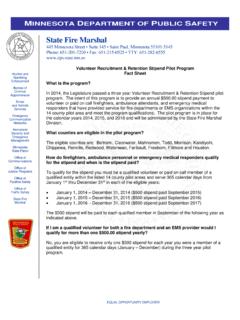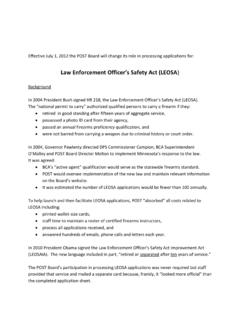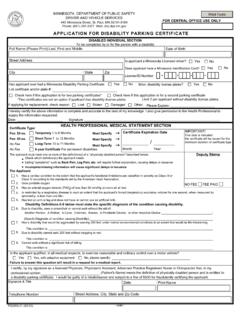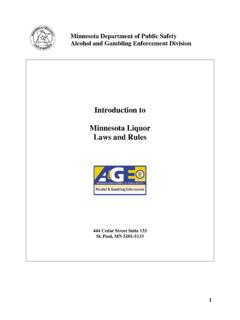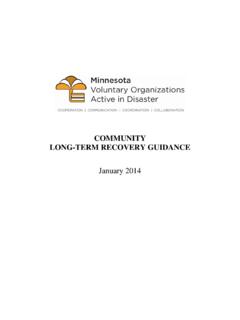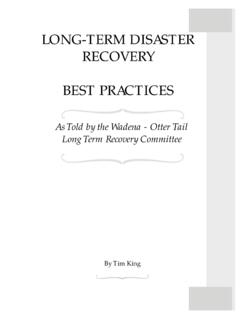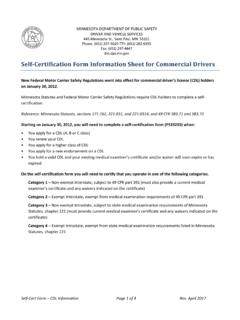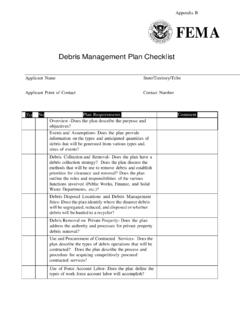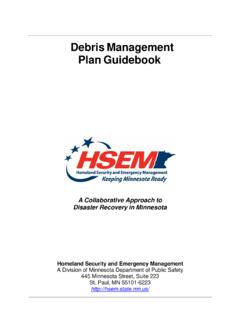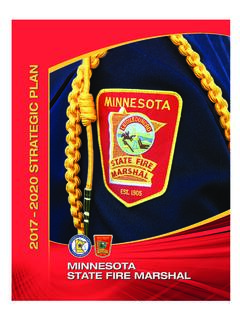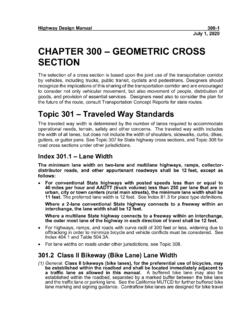Transcription of WEIGHT: maximum weight attained and no vehicle or ...
1 HEIGHT: No vehicle , unladen or with load, shall exceed a height of thirteen feet, six inches. WIDTH: The total outside width of any vehicle or load thereon shall not exceed 102 inches, unless specifically permitted by law. LENGTH: No single unit motor vehicle , unladen or with load, shall exceed a length of 45 feet extreme overall dimensions which includes front and rear bumpers and overhang, except that single unit truck cranes shall not exceed 48 feet in length.
2 Combinations of vehicles, unladen or with load, including truck-tractor and semi-trailer combinations, must not exceed a total length of 75 feet. Semitrailers over 48 shall not exceed 43 from kingpin to center of rear axle group This does not apply to public utility trucks transporting poles which cannot be shortened, or to trucks transporting pole length pulpwood. No single trailer may exceed a length of 45 feet including the tow bar assembly. No single semi-trailer may have an overall length greater than 53 feet, exclusive of non-cargo carrying accessories, such as refrigeration units or air compressors mounted or located on the front end of the semi-trailer.
3 However, semi-trailers greater than 48 feet in length shall not exceed a distance of 43 feet measured from the kingpin to the center of the rear axle group. A trailer or semi-trailer used in a three vehicle combination shall not exceed 28 1/2 feet in length, exclusive of: (1)non-cargo carrying accessories and upper coupler plates necessary for safe and efficient operation, located adjacent to the truck or truck-tractor; (2)the tow bar assembly; and (3)lower coupler equipment that is a fixed part of the rear of the first semi-trailer or trailer.
4 Truck-tractor and semi-trailer combinations exceeding 75 feet in length, a motor vehicle designed exclusively to transport motor vehicles or boats and exceeding 75 feet in length, and twin-trailer combinations may be operated only on divided highways with four or more lanes of travel and on other routes designated by the commissioner of transportation. weight : Minnesota roadways are generally categorized into two specific groups. The main group consists of all paved highways. These are commonly referred to as 10-ton routes.
5 Road authorities have the option to restrict the weight on these routes to a lower limit, in which case, signs must be posted indicating the restricted limit. unpaved routes make up the second group and are commonly referred to as 9-ton routes. Minnesota Statutes provide for maximum loads which may be carried upon any wheel, any single axle, any group of consecutive axles, and the gross vehicle weight . Trucks, trailers, and combinations of truck-tractors and semi-trailers must be licensed for their unloaded weight plus the weight of the maximum load which the owner elects to carry.
6 All vehicles and combinations of vehicles are subject to weighing to determine compliance with applicable weight laws. If a vehicle is overloaded, the driver may be required to unload enough cargo to bring the vehicle into compliance. In such cases, the responsibility for any unloaded material is borne by the vehicle 's driver and owner. Minnesota uses a number of different types of weighing equipment including portable wheelload scales, approved privately owned scales, and state-owned scales at official weigh stations.
7 On all paved routes, no vehicle or combination of vehicles equipped with pneumatic tires shall exceed: 10,000 pounds on any wheel, whether single or dual; 20,000 pounds on any single axle; 80,000 pounds maximum gross vehicle weight on one vehicle or combination having five or more axles of proper spacing; any weight specified in the Gross weight Table for groups of two or more consecutive axles. On all unpaved routes, no vehicle or combination of vehicles equipped with pneumatic tires shall exceed: 9,000 pounds on any wheel, whether single or dual; 18,000 pounds on any single axle; 80,000 pounds gross vehicle weight when the vehicle or combination is equipped with five or more axles of proper spacing.
8 On all routes, statewide, the maximum wheel load allowed on the foremost and rearmost steering axles is 600 pounds per inch of tire width or the manufacturer s rated load, whichever is less. On all axles other than the foremost and rearmost steering axles, the maximum wheel load is 500 pounds per inch of tire width, or the manufacturer s rated load, whichever is less. All weight limits are reduced by 40 percent for vehicles not equipped with pneumatic tires. IMPLEMENTS OF HUSBANDRY: An implement of husbandry that is not self-propelled and is equipped with pneumatic tires may not be operated on a public highway with a maximum wheel load that exceeds 500 pounds per inch of tire width.
9 A person operating or towing an implement of husbandry must comply with all weight limits when operating on a bridge, including any posted maximum weight . SPECIAL PERMITS: Subject to Department of Transportation requirements, special permits may be issued to move loads exceeding maximum specified size and weight limitations upon public highways. Contact MnDOT s permit office at (651)296-6000 for permit requirements and information. SEASONAL weight INCREASE: Minnesota highways are at their strongest during the winter months.
10 During the dates set by the Commissioner of Transportation each winter, the weight limitations are increased by 10 percent in each frost zone as shown below. NORTH NORTH CENTRAL CENTRAL SOUTH SOUTHEAST METRO When the 10 percent increase is in effect, a permit is required to carry the increased weight on Interstate highways. Vehicles must be properly licensed for the maximum weight attained and no vehicle or combination shall exceed 88,000 pounds on all routes. Road authorities may post restrictions on roads or bridges.
